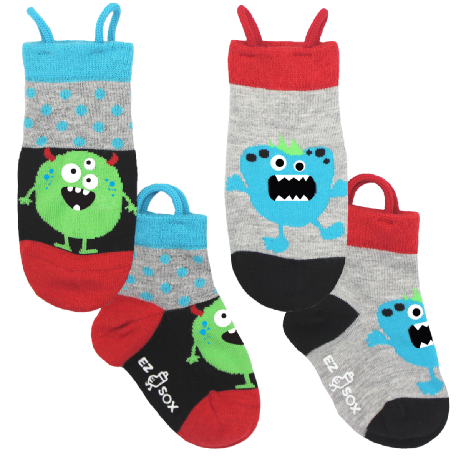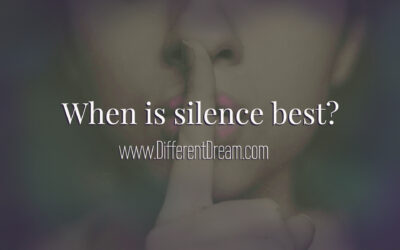Positive Discipline for Kids with Special Needs

How to discipline a child with special needs who’s lived with more pain and endured more medical treatment than most adults? That’s the question guest blogger Sylvia Phillips answers in today’s guest post. She offers great advice that could benefit parents raising kids who have special needs and those who don’t.
Positive Discipline for Kids with Special Needs
When parents have a child who has been at death’s door many times over, been to hell and back more than a few times with brain cancer torture, treatments, and suffered with up to fifty seizures a day for twelve years… those parents don’t waste a lot of precious time disciplining that child. Their only desire is to take away their child’s pain and suffering. It becomes their one and only mission to make that child feel as comfortable as possible. The only thing they want for that child in all the world is for her to get well, feel loved, be safe, and be happy.
If you have been blessed with a special needs or medically fragile child as we have, you might find, as we did, that your precious, special, little child has become a precious, special, little tyrant with much to learn about behaving properly, cooperating, and obeying the rules. It may become painfully obvious that your special child needs discipline.
You may be at a loss as how to discipline your child, as my husband and I were, when Bethany began feeling better and life got (sort of) back to normal. We had no clue how to parent our little tyrant! We still struggle to this day with how to handle her frequent bouts of aggression and violence.
Common Discipline Methods
Perhaps some of you grew up with the kind of discipline that involved spankings, shaming, time outs, getting grounded, and/or other forms of negative punishment. This is how my husband and I were raised and how we disciplined our own children as well–until it became obvious that this old fashioned method of discipline was kind of cruel and did not work very well. It certainly did not work with Bethany. It only served to exacerbate her anger and make her even more uncooperative and violent. Thus began my search for a gentler, more peaceful, less humiliating way to discipline my kids- special or other wise to behave better! I found that method through Positive Discipline by Jane Nelsen.
Positive discipline is a non-violent, non-punitive, and respectful way of teaching children how to behave. All children need to feel as if they belong and are important. Their feelings need to be validated. Children should be treated respectfully without shaming them for their bad behavior. They should be taught that they are capable of self control and responding appropriately, responsibly, and with flexibility to life’s experiences. It is the parents’ job to give the child the tools and teach them to effectively accomplish this goal (Nelsen et al. p.65).
Positive Discipline Tools
Below are a few tools that parents can use to help their child behave in a more acceptable manner:
- Show your child empathy, understanding and validate their feelings. Example: “I know that you are mad and maybe a little sad that we have to stop playing with trucks and go shopping. What can I do to help you feel better? How about we make a play date to continue our game together when we get home?”
- Use supervised distraction and redirection. Example: Your child wants to rip up big brothers drawings. Redirect him to another activity. Offer him his own paper and crayons to draw on, get out the coloring books, or offer to play a board game with your child.
- Teach better ways of responding to certain situations. Social stories are great tools for teaching proper behavior. I just made a photo book for teaching Bethany what she can do other than hitting, kicking, and pulling hair when she gets mad. In it are photos of her doing what she should be doing instead. Also included in the story are photos of other children hitting, kicking, and pulling hair with the universal red circle NO symbol and the word NO printed in big red letters on the page.
- To avoid surprises and conflicts throughout your day you might try using photo schedules of your child performing his mandatory activities for the day. Include places you may need to go and the times your child needs to get ready and be in the car.
Positive Time Out
Lastly, when all else fails, I like the concept of positive time out. It’s similar to the time out you are familiar with but without the punitive negative feelings normally attached. Positive time out is a pleasant area where a child can retreat when life becomes overwhelming and it’s hard to cope. It can be as intricate as a designated corner of the living room, perhaps curtained off and furnished with a comfy bean bag chair, a soft blanket, and a calming fragrance such as lavender, or as simple as the living room couch with a puffy soft pillow and a fleecy blanket. Positive time out should be an enjoyable, safe place where your child can go until better able to cope. All children will do better when they feel better! In punitive time out the child feels threatened and resentful. The only thing this type of time out will accomplish is your child stewing about how mean and unfair you are and how they might exact revenge upon you. (Nelsen et al. p. 49-50)
I realize that many times helpful hints like these are much easier talked about than implemented. I’ll also admit that my husband and I are still learning how to apply all these crazy ideas. We often fail and revert back to using our old, less-than-stellar methods of discipline. I can’t promise that these hints are the perfect solution to all your child’s behavior problems, but I can promise you this…You’ll be glad that you are no longer reacting to your child’s misbehaviors in anger and violence. You’ll also be happy that you are no longer making your child feel ashamed, embarrassed, and humiliated.
What’s Your Experience?
Have you used positive discipline methods with your child? What worked? What didn’t? What other positive discipline techniques do you recommend? Leave a comment.
Do you like what you see at DifferentDream.com? You can receive more great content by subscribing to the quarterly Different Dream newsletter and signing up for the daily RSS feed delivered to your email inbox. You can sign up for the first in the pop up box and the second at the bottom of this page.
Photo Credit: Grant Cochrane at www.freedigitalphotos.net
1 Comment
Submit a Comment
Subscribe for Updates from Jolene
Related Posts
My Favorite Vacation Planning Tips for Special Needs Families
Are you traveling this summer? Jolene provides her favorite vacation planning tips for special needs families.
The Weight of Silence as Parents of Kids with Invisible Disabilities
Guest blogger Lisa Pelissier explains the weight of silence as parents of kids with invisible disabilities.
How to Build a Thriving Marriage as You Care for Children with Special Needs
Todd and Kristin Evans explain how to build a thriving marriage as you care for children with special needs.






Hi Sylvia,
What you are saying is certainly stiking a chord with me. But I’m trying to figure out why positive discipline seems to be more vital with special needs children than with other children? Could it be that they are already coping with so much, that any extra emotional stress (like being disciplined) pushes them completely over the edge? Hmmm…